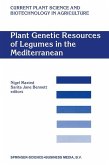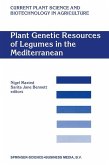However, the transition from primitive to 'advanced' cultivars has had the effect of narrowing the genetic base. This has happened in two distinct ways: (1) selection for relative uniformity, resulting in 'pure' lines, multi lines, single or double hybrids, etc. ; and (2) selection for closely defined objectives. Both of these processes have resulted in a marked reduction in genetic variation. At the same time, there has been a tendency to restrict the gene pool from which parental material has been drawn. This is a result of the high level of productivity achieved when breeding within a restricted but well-adapted gene pool, and of breeding methods which have made it possible to introduce specifically desired improvements, such as disease resistance and quality characteristics, into breeding stocks with a minimum of disturbance to genotypic structure. Developments in agriculture, such as intensive mechanization, the widespread application of fertilizers and the use of herbicides, fungicides and pesticides, have created a situation whereby a few, selected high yielding cultivars may be grown over large parts of the earth, so further contributing to a decline in crop genetic diversity. This process is under way in all countries, both developed and developing, and unfortunately in cludes some of the richest primary and secondary gene centres of several important food crops.
Hinweis: Dieser Artikel kann nur an eine deutsche Lieferadresse ausgeliefert werden.
Hinweis: Dieser Artikel kann nur an eine deutsche Lieferadresse ausgeliefert werden.








